When it comes to advancing your teaching career, a meticulously crafted educational resume can be your most potent asset. Welcome to our guide on “Crafting an Educational Resume: Showcasing Teaching Skills.” Whether you’re a new teacher eager to enter the educational field or an experienced educator seeking fresh opportunities, this guide is your roadmap to creating a compelling educational resume that sets you apart.
In the realm of education, it’s not just about qualifications and experience; it’s about how you convey your teaching skills. Our comprehensive guide goes beyond the basics, offering invaluable insights that transcend typical resume services. We’ll help you navigate the nuances of educational resume writing, ensuring that your resume not only reflects your qualifications but also effectively communicates your teaching expertise.
As we explore the intricacies of educational resume building, you’ll learn to select the right format, craft an engaging summary, and artfully present your teaching experience. We’ll delve into the importance of highlighting your educational background and certifications while shining a spotlight on the key teaching skills that make you a standout candidate.
The Basics of an Educational Resume
Creating an educational resume that effectively highlights your teaching skills begins with mastering the fundamentals. Your resume is more than a list of your qualifications; it’s a narrative of your journey as an educator. Here, we’ll break down the essential elements of an educational resume.
Start with a Strong Opening: Begin your resume with a compelling summary or objective statement. This concise section sets the stage for the rest of your document, providing a snapshot of your teaching career and your aspirations.
Contact Information: Ensure your contact information is current and easily accessible. Include your name, phone number, email address, and LinkedIn profile if applicable. Make it effortless for potential employers to reach out.
Professional Experience: Your teaching experience is the core of your resume. List your positions in reverse chronological order, starting with your most recent role. For each position, include the school’s name, location, your title, and the dates you worked there.
Responsibilities and Achievements: Rather than simply listing your job duties, elaborate on your key responsibilities and achievements. Highlight any innovative teaching methods, projects, or initiatives you spearheaded.
Education and Certifications: Provide details of your academic qualifications and teaching certifications. Include the institution’s name, degree obtained, graduation date, and any relevant honors or awards.
Professional Development: Mention any additional courses, workshops, or seminars related to education that you’ve completed. This demonstrates your commitment to continuous learning and professional growth.
Skills and Qualities: Dedicate a section to showcasing your teaching skills and qualities. Emphasize your classroom management abilities, communication skills, and any unique strengths that set you apart as an educator.
Customize for Each Application: Tailor your resume for each job application. Highlight the qualifications and experiences most relevant to the specific position you’re applying for.
Remember, an educational resume is your chance to tell your story as an educator. By mastering these basics, you’ll be well on your way to creating a compelling narrative that showcases your teaching skills and experience effectively.
Choosing the Right Resume Format
Selecting the appropriate resume format is crucial to presenting your teaching skills in the best possible light. Your choice of format can influence how employers perceive your qualifications. Here, we’ll explore the most common resume formats and help you determine which one suits your unique teaching career.
Chronological Resume: This format lists your work history in reverse chronological order, starting with your most recent position. It’s ideal if you have a consistent and progressive teaching career with minimal employment gaps. The chronological format highlights your career progression effectively.
Functional Resume: A functional resume focuses on your skills and qualifications rather than your work history. This format is suitable if you’re transitioning into teaching from another field or if you have employment gaps. It allows you to emphasize your teaching skills and achievements.
Combination Resume: As the name suggests, a combination resume blends elements of both chronological and functional formats. It provides a comprehensive overview of your teaching career while also highlighting your key skills and qualifications.
Selecting the right format depends on your unique teaching journey. Consider your career stage, work history, and the specific job you’re applying for. By choosing wisely, you can ensure that your resume effectively showcases your teaching skills and expertise, making a lasting impression on potential employers.
Crafting a Compelling Resume Summary

Your resume’s opening statement, often referred to as the resume summary or objective, is your chance to make a strong first impression. Crafting a compelling resume summary is an art that can significantly influence whether hiring managers continue reading your application. Here’s how to create a summary that captivates and intrigues.
Begin with a Hook: Start your summary with a captivating hook that instantly grabs the reader’s attention. This could be a noteworthy achievement, a unique teaching philosophy, or a brief anecdote that reflects your passion for education.
Highlight Your Teaching Philosophy: Use this space to showcase your teaching philosophy and your commitment to fostering a positive learning environment. Explain what drives you as an educator and your approach to teaching.
Emphasize Key Qualities: Mention your key qualities and attributes that make you an effective teacher. Whether it’s your adaptability, creativity, or dedication to student success, make it clear why you stand out.
Relevant Achievements: Highlight a few significant achievements from your teaching career. These could be improvements in student performance, successful curriculum initiatives, or recognition for your contributions to the school community.
Keep It Concise: A resume summary should be concise, typically consisting of 3-4 sentences. It should provide a glimpse into your teaching persona without overwhelming the reader.
Remember, your resume summary is your first opportunity to connect with potential employers on a personal level. Craft it with care, ensuring it reflects your passion for teaching and your unique qualities as an educator.
Showcasing Teaching Experience
Your teaching experience is the heart of your educational resume. This section provides hiring managers with a detailed view of your career, responsibilities, and achievements as an educator. Here’s how to effectively showcase your teaching experience.
Detail Your Roles: Begin by listing your teaching positions in reverse chronological order, starting with the most recent. Include the school’s name, location, your job title, and the dates you worked there.
Highlight Your Impact: For each teaching role, go beyond a simple job description. Focus on the impact you had on students’ learning experiences. Discuss specific achievements, such as improvements in student test scores, successful classroom projects, or innovative teaching methods you employed.
Classroom Management: Describe your approach to classroom management and how you maintain a positive and productive learning environment. Discuss any strategies or techniques you use effectively.
Student Engagement: Share your strategies for engaging students in the learning process. Highlight any extracurricular activities or special projects you initiated to enrich their educational experience.
Collaboration: Mention your collaboration with colleagues, parents, and students to create a supportive educational community. Emphasize teamwork and your contributions to school initiatives.
Professional Growth: If applicable, discuss your professional development and any additional certifications or training you’ve undertaken to enhance your teaching skills.
Your teaching experience section should paint a vivid picture of your contributions as an educator. Use specific examples and achievements to demonstrate your effectiveness in the classroom and your commitment to student success.
Highlighting Education and Certifications
Education and certifications are critical components of your educational resume, signaling your qualifications as an educator. Highlighting these aspects effectively can bolster your credibility and demonstrate your commitment to excellence.
Educational Background: Begin by listing your academic qualifications. Include the names of the institutions, degrees earned, graduation dates, and any academic honors or awards.
Teaching Certifications: Mention your teaching certifications, specifying the types of certifications you hold, their issuers, and the dates of issuance. Certifications are a testament to your qualifications as a teacher.
Continuing Education: If you’ve pursued additional courses, workshops, or seminars relevant to education, share them in this section. It underscores your dedication to professional growth.
Professional Associations: If you’re a member of any professional teaching associations, such as the National Association of Educators, mention them here. It demonstrates your commitment to staying informed about industry trends.
Highlighting your education and certifications underscores your qualifications as a teacher and shows potential employers that you’re dedicated to maintaining high standards of expertise. Make sure to include these details in your educational resume, positioning yourself as a highly qualified educator.
Spotlighting Key Teaching Skills
Effectively showcasing your key teaching skills on your educational resume is essential to demonstrate your competence as an educator. Here, we delve into how you can highlight these skills to stand out in the competitive field of education.
Identify Your Strengths: Begin by identifying your core teaching strengths. Consider skills such as classroom management, curriculum development, differentiated instruction, and student assessment.
Provide Concrete Examples: Rather than merely listing your skills, provide concrete examples of how you’ve applied them in your teaching career. Share success stories or instances where your skills made a difference in student learning.
Highlight Versatility: Emphasize your versatility as an educator. Discuss how you adapt your teaching methods to accommodate different learning styles and the diverse needs of your students.
Soft Skills Matter: Don’t forget to spotlight soft skills like communication, empathy, and adaptability. These skills are equally important in creating a positive and effective learning environment.
Tailor to the Job: Customize your skills section to align with the specific requirements of the job you’re applying for. Highlight skills that are particularly relevant to the role.
By thoughtfully spotlighting your key teaching skills, you provide prospective employers with a clear picture of what you bring to the classroom and how you can contribute to their educational institution.
Incorporating Technology and Innovation
In the digital age, the integration of technology and innovation into education is paramount. Your ability to incorporate these elements into your teaching can set you apart as a modern educator. Here, we explore how you can showcase this expertise on your educational resume.
Highlight Technology Proficiency: If you’re tech-savvy, be sure to mention it on your resume. Discuss your proficiency with classroom technologies, learning management systems, and educational software.
Digital Teaching Resources: Share how you utilize digital teaching resources to enhance your lessons. Explain how you leverage online tools, multimedia, and educational apps to engage and educate your students.
Innovation in Curriculum: Highlight any innovative curriculum development projects you’ve been involved in. Describe how you’ve designed and implemented creative lesson plans that incorporate new teaching methods.
Professional Development: Mention any professional development related to technology and innovation in education. Courses, certifications, or workshops in educational technology signal your commitment to staying current.
Adaptability: Emphasize your adaptability to evolving educational technologies. Discuss your ability to quickly learn and integrate new tools to enhance the learning experience.
Incorporating technology and innovation into your educational resume demonstrates your readiness to prepare students for the digital age and positions you as a forward-thinking educator.
Addressing Specializations and Extra-Curricular Involvement
Your specialization and involvement in extracurricular activities can significantly enrich your educational resume. Here, we explore how to effectively address these aspects to make your resume stand out.
Specializations: If you have specialized knowledge in a particular subject area or teaching method, showcase it. Explain how your specialization enhances your effectiveness as a teacher and benefits your students.
Extracurricular Activities: Discuss your involvement in extracurricular activities, such as clubs, sports teams, or academic initiatives. Highlight your role in fostering a well-rounded educational experience for your students.
Leadership Roles: If you’ve held leadership positions within your school or community, mention them. Leadership roles demonstrate your ability to take initiative and make a positive impact.
Impact and Achievements: Share specific examples of how your specializations and extracurricular involvement have made a difference. Describe successful projects, events, or initiatives you’ve led.
Alignment with School Values: Ensure that your specializations and extracurricular activities align with the values and mission of the educational institution you’re applying to. Emphasize your commitment to the school’s ethos.
By addressing your specializations and extracurricular involvement, you illustrate your dedication to creating a holistic learning environment and highlight your unique contributions as an educator.
Conclusion
In crafting your educational resume to showcase your teaching skills, you’ve embarked on a journey of self-discovery and professional growth. Your resume is no longer just a document; it’s a reflection of your passion for education, your dedication to students, and your commitment to excellence.
As you conclude this exploration, remember that your educational resume is a dynamic tool. It’s not static but evolves with your career. Continuously update it, adding new achievements, certifications, and experiences to reflect your growth as an educator.
The journey to crafting a compelling educational resume is a testament to your commitment to the teaching profession. By showcasing your teaching skills effectively, you’re not just presenting your qualifications but telling your story as an educator.
With your enhanced resume in hand, you’re well-prepared to take the next step in your teaching career. Whether you’re seeking a new teaching opportunity, a leadership role, or a chance to make a difference in the lives of students, your resume will be your ally on this exciting journey.
Best of luck in your endeavors, and may your educational resume open doors to exciting opportunities in the world of education!
FAQ
What should I include in my resume if I’m a new teacher with limited experience?
When you’re new to teaching, emphasize your relevant coursework, student teaching experience, and any related internships or volunteer work. Highlight your passion for education and your eagerness to learn and grow as an educator.
Can you provide examples of strong educational resume summaries?
Crafting a compelling resume summary is a personal endeavor, but here’s an example: “Passionate and dedicated educator with a track record of fostering a positive and inclusive learning environment. Experienced in curriculum development, classroom management, and using technology to enhance student engagement.”
How can I make my resume applicant tracking system (ATS)-friendly?
To make your resume ATS-friendly, use standard headings and keywords relevant to the teaching position you’re applying for. Avoid using fancy formatting, graphics, or images. Tailor your resume to match the specific job description and requirements.
Should I include references in my resume?
It’s not necessary to include references on your resume. Instead, create a separate reference list to provide when requested during the interview process. Ensure your references are individuals who can speak to your teaching skills and work ethic.

